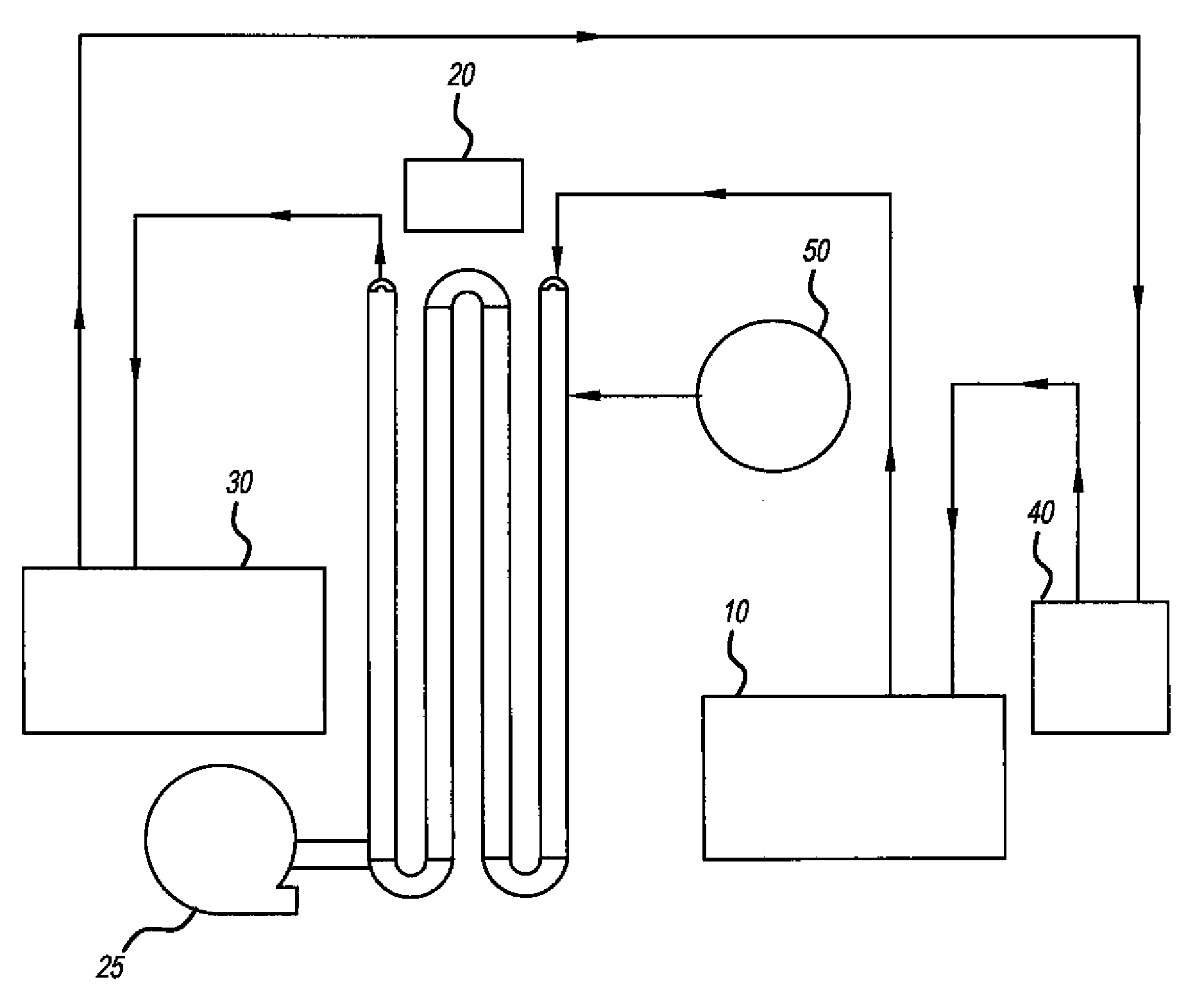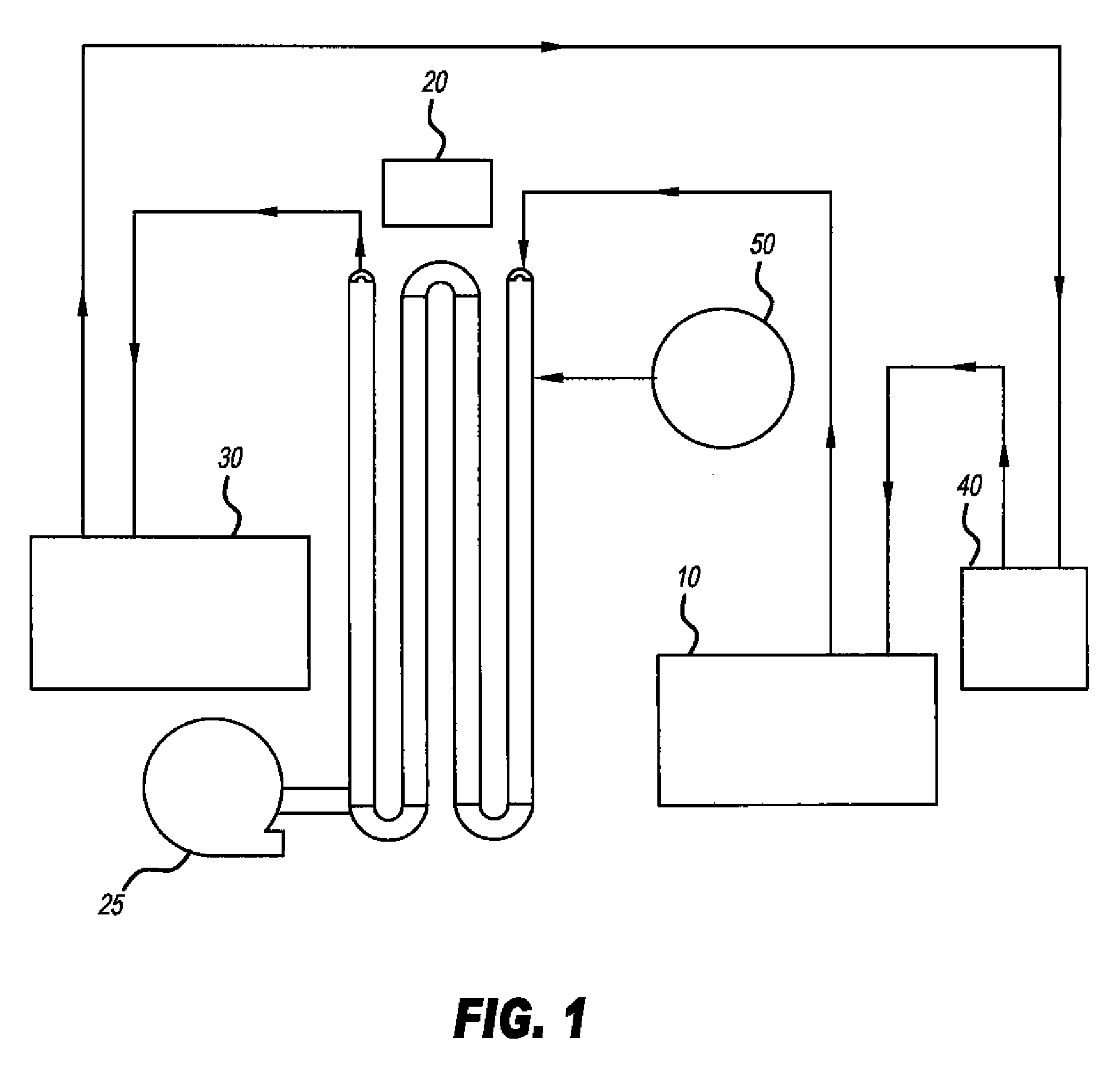Polymer-containing solvent purifying process
- Summary
- Abstract
- Description
- Claims
- Application Information
AI Technical Summary
Benefits of technology
Problems solved by technology
Method used
Image
Examples
example
[0024]Samples of commercially available Cyrel® flexographic printing plate precursors (DuPont) were imagewise exposed and then processed (developed) in a commercially available flexographic plate processor unit using a washout solution (developer) like that described in Example 4 of U.S. Pat. No. 6,162,593 (Wyatt et al.) that contained diisopropylbenzene, benzyl alcohol, a petroleum distillate, and a terpene alcohol. The resulting contaminated flexographic developing solution, which contained dissolved polymer from the flexographic printing plate, was then pumped through a SCEPTER stainless steel membrane module (containing TiO2 coatings permanently sintered to the inside of stainless steel support tubes). When the polymer level in the permeate (purified solvent solution) reached about 3 weight % solids (typically 1% solids or less), the purified solvent solution was ready for reuse in the plate processor unit and supplied to that unit as needed to process additional imaged plate sa...
PUM
| Property | Measurement | Unit |
|---|---|---|
| Temperature | aaaaa | aaaaa |
| Length | aaaaa | aaaaa |
| Pore size | aaaaa | aaaaa |
Abstract
Description
Claims
Application Information
 Login to View More
Login to View More - R&D
- Intellectual Property
- Life Sciences
- Materials
- Tech Scout
- Unparalleled Data Quality
- Higher Quality Content
- 60% Fewer Hallucinations
Browse by: Latest US Patents, China's latest patents, Technical Efficacy Thesaurus, Application Domain, Technology Topic, Popular Technical Reports.
© 2025 PatSnap. All rights reserved.Legal|Privacy policy|Modern Slavery Act Transparency Statement|Sitemap|About US| Contact US: help@patsnap.com


